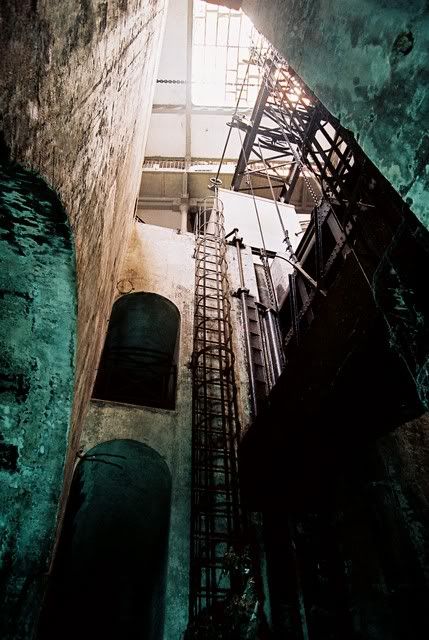When in Rome, Do as the Romans Don't

The original Cloaca maxima was built as early as 600BC by the then Roman King Lucius Tarquinius Priscus. As Steve Duncan of Undercity discovered in 2004, its nigh on impossible to access illegally, despite it being a continuously operational sewer, albeit mostly diverted into larger sewers. Its outfall has been left, disconnected from the rest of it, ending after 20 metres at a backfill and the main access manhole sits under CCTV cameras, lights and padlocks in the middle of the Old Roman Forum.
While down at the old outfall, Steve n Moe nevertheless found a large sewer overflow and for posterities sake, its been nicknamed the New Cloaca Maxima.
While in Rome, i did as Romans normally dont and went down to this part of the River Tiber. The river walk, while publicly accessible, isnt often utilised by anyone other than the homeless... indeed they use it as a toilet, the steps down from near the old Ponte Rotto are littered with steamers and those already well steamed out by the Italian sun, while soiled toilet paper flutters from its position, caught in bushes to the sides :D
The tunnel outfall is a big bastard, easily 14ft high, a big arch, covered by two huge hinged grilles. It took me 20 minutes with a large tree branch and a small boulder to get through it. I had to find both, then drop them down to the outfall, then position the boulder next to the tiny gap between the grilles, then while levering one grille open with the 8ft long tree branch, use my feet to kick the boulder into the gap made by the levering.
It worked and after some gut-sucking and gonad mashing, i was through.
The outfall tunnel itself only runs 200m and presently ive only one photo of it.
Its a brick built construction with a granite floor, however the brickwork has long since been covered with concrete, its existence shining through cracks and chips in the concrete façade.

Ahead the tunnel terminates at a large, well illuminated shaft. To the right is a huge closed penstock and ahead but considerably higher above, is the overflow chute for the main Tiber sewer. The shaft was very nice, built of a soft looking white stone... my knowledge of stone isnt good enough to properly identify it, though it looked like Limestone...?

Either corner of the shaft is flanked by caged ladders and the top of the shaft is a glass skylight, actually the skylight for the huge penstock building that sits atop the shaft, its surface location being mere metres from the river end of the Circus Maximus.

I climbed one of the ladders up into the penstock building, a reasonably large structure featuring a myriad of mechanisms and two shafts, the one id just climbed out of...

And the main sewer shaft. This second shaft, i was a bit wary of climbing down alone. It was awkward to access the ladder, the sewer beneath was nailing it along at deathly rate and to boot, the lower halves of the ladder cages had become cocoons of still wet sewer waste. Nevertheless, down i went, holding my breath as i squeezed through the toilet paper and sanitary napkin umbilicus at the bottom.

The sewer beneath was about 14ft high. Steve had said the flow was at least 6ft deep, as his tripod hadnt reached the bottom... i could believe him. A narrow walkway allowed traversal downstream from my present position, but barely 20m down, a side pipe was blasting sewage with enough force to knock a human being off the ledge if they tried to pass it. Had i climbed down one of the other ladders i couldve gone 100m upstream before hitting an impassable side tunnel, according to Steve. I took one or two photos before climbing back up.

The light was fading and i saw little point in sticking around, as i was to catch an 8 hour train to Zurich early the next day, so i left, kicking my boulder out as i went.
